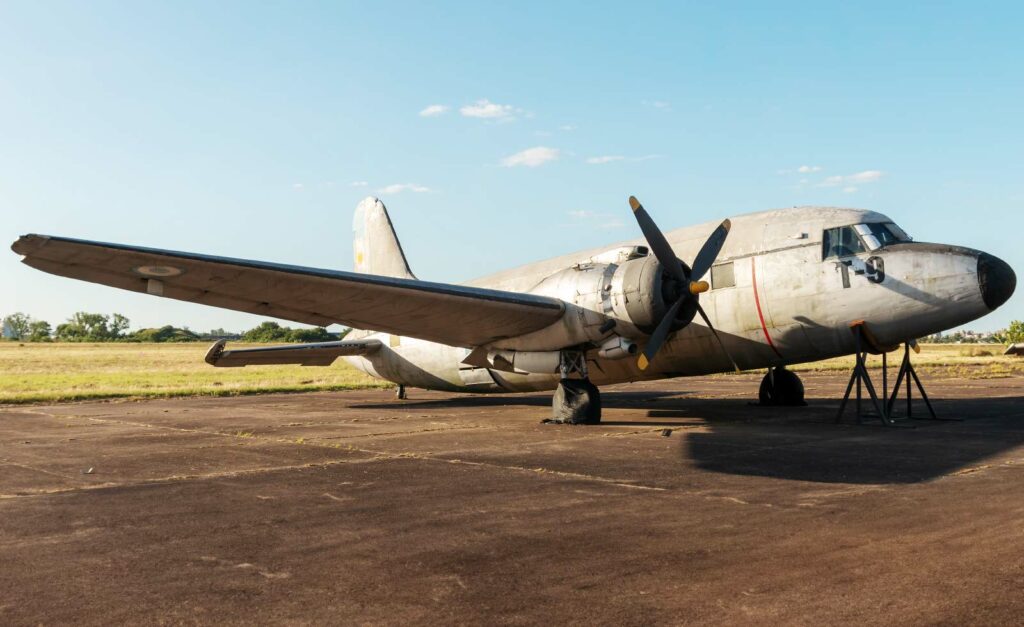The Vickers Viking, a British twin-engine short-range airliner, was renowned for post-WWII civil aviation, serving mainly in Europe.
The Vickers Viking was a significant British commercial aircraft, primarily used for short to medium-haul routes in the post-World War II era. It was notable for its reliability and efficiency in civil aviation. The Vickers Viking symbolized the transition from military to civil aviation needs following World War II. It was developed to fulfill the growing demand for efficient and reliable short-haul commercial air travel.
History of the Development of the Vickers Viking
In the aftermath of World War II, there was a significant shift in aviation focus from military to commercial needs. The Vickers Viking was developed in this context, with the objective of providing a reliable and efficient means of civil air transport.
The Vickers-Armstrongs, a prominent British aircraft manufacturer, initiated the Viking program. The development aimed to utilize the technological advancements achieved during the war for peacetime applications. The first prototype took to the skies on June 22, 1945, marking a new era in British commercial aviation.
The Viking was developed to meet the needs of the burgeoning air travel market in Europe, capitalizing on the increased demand for passenger and cargo transport in the post-war period. The aircraft was not assigned a NATO nickname as it was a commercial airliner and not part of any military inventory.
Design of the Vickers Viking
The design of the Vickers Viking was a testament to the efficiency and practicality required for civil aviation. It was a twin-engine, medium-range aircraft, featuring a high-wing monoplane design for enhanced stability and payload capacity.
The Viking was powered by two Bristol Hercules radial engines, each producing around 1,690 horsepower (1,260 kW). It measured 65 feet 2 inches (19.86 meters) in length with a wingspan of 89 feet 3 inches (27.20 meters). The aircraft could accommodate up to 24 passengers, with a later variant, the Viking 1B, increasing the capacity to 36.
The aircraft’s high-wing design allowed for unobstructed cargo loading and passenger entry, making it ideal for commercial operations. However, its piston-engine technology and performance parameters were soon eclipsed by the advent of more advanced turboprop and jet aircraft.

Performance of the Vickers Viking
The Viking’s performance was well-suited to its role as a short to medium-haul airliner. It achieved a cruising speed of approximately 210 mph (338 km/h) and had a service ceiling of 23,500 feet (7,163 meters). The range of the Viking was about 1,600 miles (2,575 km), allowing it to efficiently cover European routes.
Compared to contemporaries like the Douglas DC-3, the Viking offered a more modern and comfortable passenger experience but lacked the DC-3’s versatility and widespread operational history. The Viking’s reliability and performance made it a popular choice among European airlines in the immediate post-war period.
Military Use and Combat of the Vickers Viking
The Vickers Viking was predominantly a civilian aircraft and did not have any inherent armament or combat capabilities. However, a military transport variant known as the Vickers Valetta was developed, which saw extensive use by the Royal Air Force for troop and cargo transport.
The Viking itself was not used in combat but played a vital role in the post-war reconstruction efforts, facilitating the movement of people and goods across Europe. Its military variant, the Valetta, participated in various military operations, providing crucial logistical support.
The Viking was used by various airlines and saw service in numerous countries. Over time, as more advanced aircraft entered the market, the Viking was gradually phased out. The introduction of turboprop and jet aircraft, offering faster speeds and greater ranges, led to the retirement of the Viking from commercial service.
The Vickers Viking holds an important place in the history of commercial aviation, symbolizing the transition from wartime production to peacetime needs. It was a reliable and efficient workhorse of the early post-war era, playing a significant role in the revival of European civil aviation. While it was eventually superseded by more advanced aircraft, the Viking’s legacy remains as a cornerstone in the development of commercial air transport.
Back to Transport planes.